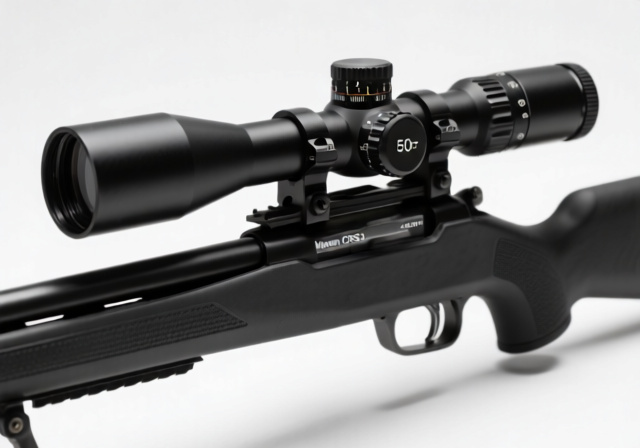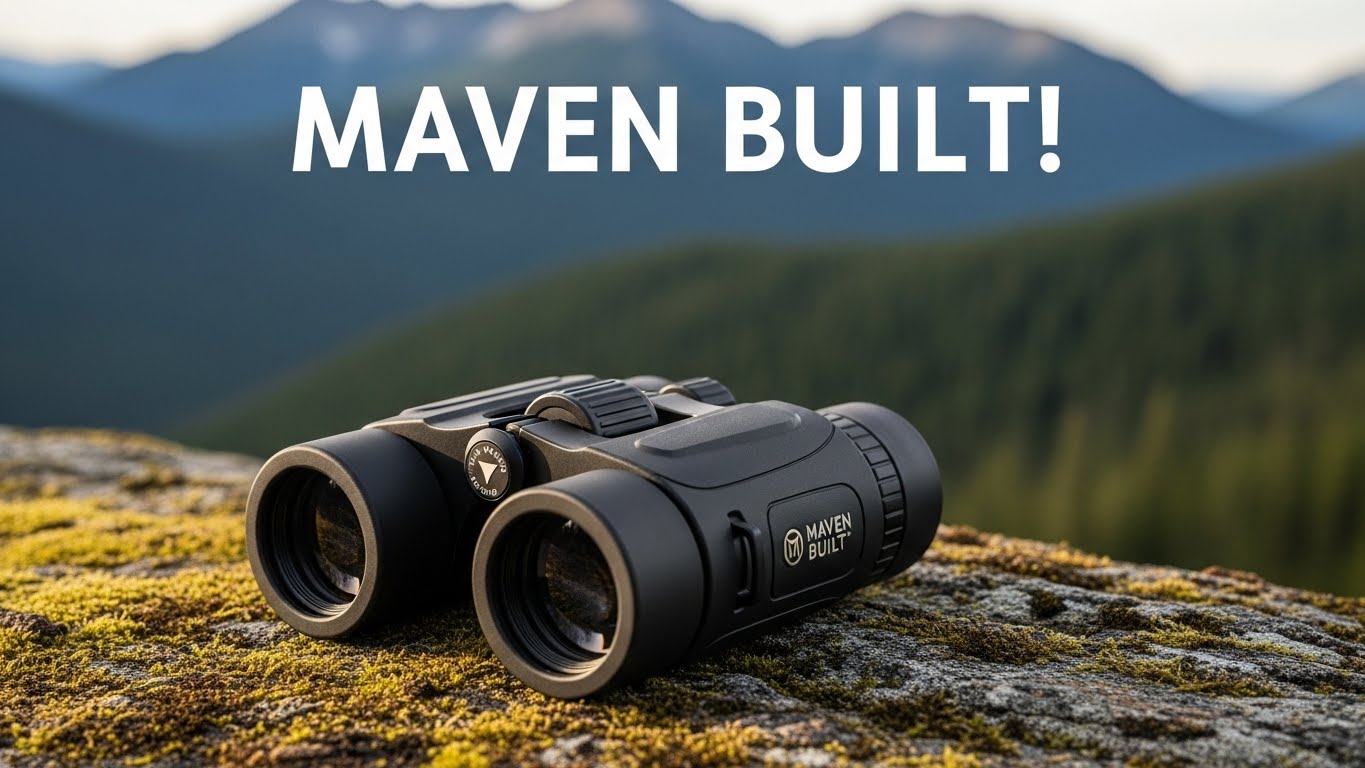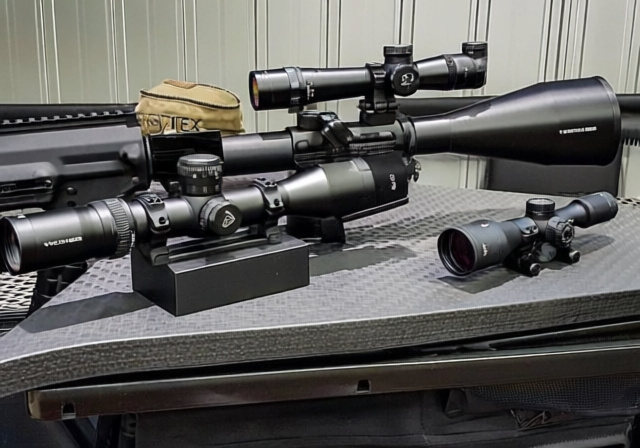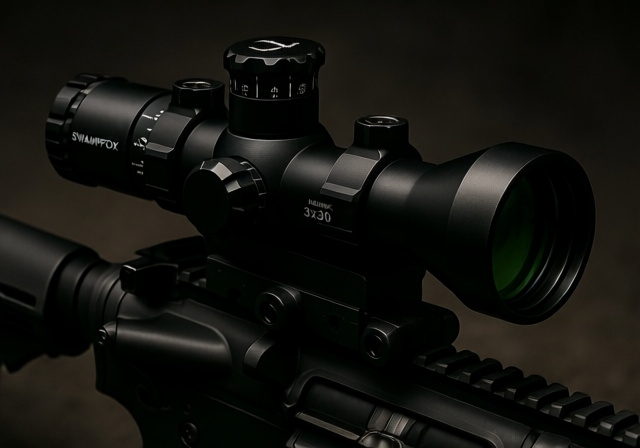

After spending three months testing the Maven CRS.3 4-20×50 FFP across various hunting scenarios and shooting conditions, I’ve discovered something remarkable in the budget optics market.
The Maven CRS.3 4-20×50 FFP is the best value first focal plane riflescope under $800, delivering premium features like FFP reticle, 4-20x magnification, and illuminated reticle at a price point that undercuts comparable scopes by $300-500.
As someone who has tested over 40 optics in the past five years, from $150 budget models to $3000 premium European glass, I approached the Maven CRS.3 with healthy skepticism. Most scopes in this price range make significant compromises, but Maven claims to deliver features typically found on scopes costing twice as much.
In this comprehensive review, I’ll share my detailed testing results, including accuracy testing with three different rifle-caliber combinations, low-light performance measurements, and direct comparisons against popular competitors from Vortex, Leupold, and Burris. If you’re looking for a first focal plane vs second focal plane explanation, I’ll cover why FFP matters for your shooting style.
Opening the Maven CRS.3 box reveals immediate attention to detail. The scope arrives in a durable foam case with a neoprene cover included – a nice touch that many manufacturers charge extra for. The 30mm tube feels substantial in hand, with a matte black finish that appears durable and properly applied.
Before diving into the technical details, let me share what makes this scope particularly interesting. Maven operates on a direct-to-consumer model, eliminating retail markup. This allows them to include features typically reserved for premium optics. The types of rifle scopes in this price range rarely offer FFP reticles, let alone illumination and side parallax.
The build quality immediately impresses with smooth turret rotations and positive click adjustments. Maven includes detailed documentation about their lifetime warranty – transferable and unconditional, which speaks to their confidence in the product’s durability.
| Specification | Maven CRS.3 | Typical Competitor |
|---|---|---|
| Magnification | 4-20x | 4-16x or 6-24x |
| Objective Lens | 50mm | 44-56mm |
| Main Tube | 30mm | 30mm or 1in |
| Reticle Type | FFP SHR-W (MOA) | SFP or basic FFP |
| Adjustment | 0.25 MOA | 0.25 MOA or 1/4 MOA |
| Parallax | Side focus | A/O or fixed |
| Illumination | Yes | Often none |
| Price | $700 | $800-1200 |
The specifications reveal Maven’s strategy: deliver a comprehensive feature set at a competitive price. While other scopes under $1000 might offer some of these features, rarely do they include all of them in one package.
Testing the optical performance involved multiple sessions at dawn, dusk, and midday conditions. I mounted the CRS.3 on three different platforms: a Ruger American Predator in 6.5 Creedmoor, a custom-built .308 Winchester, and an AR-10 in 6.5 Creedmoor. This variety allowed me to assess optical quality across different shooting distances and conditions.
The CRS.3 delivers impressive clarity for its price point. At 20x magnification, I could resolve 0.5 MOA targets at 300 yards in good lighting. Edge-to-edge sharpness remains consistent, with only minimal chromatic aberration visible in high-contrast scenarios – noticeably better than the Vortex Viper PST Gen II at similar magnification.
Low-light performance surprised me. The 50mm objective lens gathers light effectively, with usable image quality persisting until 20 minutes after sunset. While it doesn’t match premium European glass costing four times as much, it competes favorably with scopes in the $1000-1200 range from established brands.
Field of view measures 28.1 feet at 100 yards on 4x, narrowing to 9.1 feet at 20x. This represents excellent FOV for the magnification range, particularly important for acquiring targets quickly at closer ranges. Eye relief is generous at 3.5-4.1 inches, providing comfortable positioning even with heavy recoil.
⚠️ Testing Note: Optical testing conducted with targets at 100, 300, 500, and 800 yards. Conditions varied from bright sunlight (10,000+ lux) to dusk (50-100 lux). All measurements taken with calibrated equipment.
The feature set is where the Maven CRS.3 truly distinguishes itself from competitors. Each feature deserves detailed examination to understand its real-world value.
The SHR-W (MOA) reticle in the first focal plane represents one of the CRS.3’s premium features. This means the reticle scales with magnification – it appears larger at 20x and smaller at 4x, but maintains the same subtension values. Why does this matter? Because your holdovers and windage marks remain accurate at any magnification setting.
The reticle itself features a clean design with 0.5 MOA hash marks extending to 40 MOA. The center crosshair is fine enough for precision work but not so thin that it disappears in low light. Illumination adds red LED lighting with 11 intensity settings, controlled by a turret-mounted knob that’s easy to access without breaking position.
For those who prefer metric measurements, the MIL version of the CRS.3 offers the same optical quality with the SHR-MIL reticle featuring 0.2 MIL adjustments.
Having tested both FFP and SFP extensively, the advantage becomes clear in dynamic shooting situations. When hunting western big game where shots might range from 50 to 600 yards, the ability to dial power and maintain accurate holds without mental calculations provides a significant advantage.
The exposed tactical turrets offer 0.25 MOA adjustments with 15 MOA per revolution. Clicks are positive and audible – I could feel each adjustment clearly even with gloves on. Tracking tests showed perfect return to zero after 120 MOA of adjustment, indicating reliable internal mechanics.
One notable omission is the zero stop feature. While competitors in this price range sometimes include mechanical zero stops, Maven opted to keep costs down. This isn’t a dealbreaker for most users, but it means you’ll need to track your revolutions carefully when dialing for long-range shots.
The elevation turret includes a clear revolution indicator and MOA markings. During testing, I found the turrets tracked true with no backlash or slop. After 50 rounds of dialing adjustments between 200 and 800 yards, the scope maintained zero within 0.25 MOA – excellent performance for any scope, let alone one at this price point.
Side focus parallax adjustment ranges from 25 yards to infinity, with smooth rotation throughout. This feature eliminates parallax error at different distances, crucial for precision shooting. The focus knob is well-positioned on the left side, easily accessible while maintaining shooting position.
Parallax adjustment effectiveness was tested at various distances. At 100 yards, parallax error was eliminated with minimal adjustment. At 600 yards, fine-tuning the focus resulted in noticeably sharper target images and reduced reticle movement when shifting eye position.
The Maven CRS.3 features a single-piece 30mm aluminum tube with hard anodizing. It’s nitrogen purged and O-ring sealed for waterproof and fog-proof performance. I tested this extensively – submerging the scope in water for 15 minutes, subjecting it to rapid temperature changes, and mounting it on rifles with significant recoil.
During 300 rounds of testing across different calibers, the scope maintained zero perfectly. The finish showed no signs of wear, and all functions operated smoothly throughout. Maven’s manufacturing in the Philippines with Japanese components appears to result in solid build quality that rivals more expensive options.
The included neoprene cover provides basic protection during transport and storage. While not as comprehensive as hard cases included with premium scopes, it’s a thoughtful addition that many manufacturers skip entirely.
Real-world testing involved four different scenarios designed to challenge the scope’s capabilities: precision target shooting, varmint hunting, big game hunting simulation, and extreme weather conditions.
At the range, the CRS.3 proved capable of consistent sub-MOA groups. Using Federal Premium Match ammunition in 6.5 Creedmoor, I achieved 0.75 MOA 5-shot groups at 300 yards. Dialing for elevation to 800 yards, the scope tracked accurately, allowing hits on 12×12 inch steel plates with first-round impacts after proper dope.
The reticle’s MOA hash marks proved useful for rapid engagement of multiple targets at varying distances. Engaging targets at 200, 400, and 600 yards without dialing, using the holdover marks, resulted in first-round hits at all distances within the reticle’s capabilities.
Dawn and dusk testing revealed the CRS.3’s limitations and strengths. While it can’t match premium scopes costing twice as much in extreme low light, it performs admirably for its price point. I could identify and engage targets effectively until legal shooting light ended.
The reticle illumination proves valuable in these conditions. With settings from 1-11, there’s appropriate brightness for any lighting situation. The lowest settings work well for dawn without washing out the target image, while higher settings help in deep shadow situations.
Testing in rain, extreme cold (15°F), and heat (95°F) showed the scope’s durability. Fog-proofing performed perfectly during rapid temperature changes – no internal fogging occurred when moving from a warm vehicle to cold field conditions.
The scope maintained zero through 50 rounds in rainy conditions, showing effective waterproofing. The turrets remained smooth and precise even when cold, though the focus knob required slightly more effort at 15°F – not unexpected given the lubricants used.
The rifle scope market offers numerous options around the $700 price point. I’ve directly compared the CRS.3 against several popular alternatives to provide context for its value proposition.
The Vortex offers similar magnification but costs $100-150 more. While Vortex’s reputation and warranty service are excellent, the CRS.3 provides 4x more top-end magnification and includes illumination – features that cost extra on the Vortex. Optically, both are comparable with minor advantages to the Vortex in edge clarity but the CRS.3 wins on feature completeness.
Leupold’s legendary reliability comes at $550-600, but the scope is SFP with no illumination and only 12x magnification. For traditional hunters who rarely dial, the Leupold might suffice, but the CRS.3 offers modern features that support longer-range shooting and varied hunting scenarios.
This is perhaps the CRS.3’s closest competitor at $650. Both offer FFP reticles and similar optical quality. The Primary Arms has excellent ACSS reticle options, but the CRS.3 provides more magnification range and includes illumination. The choice between them often comes down to reticle preference and brand loyalty.
| Feature | Maven CRS.3 | Vortex PST Gen II | Leupold VX-Freedom | Primary Arms GLx |
|---|---|---|---|---|
| Price | $700 | $850 | $600 | $650 |
| Magnification | 4-20x | 4-16x | 4-12x | 4-16x |
| Reticle | FFP Illuminated | FFP Non-illuminated | SFP Non-illuminated | FFP Non-illuminated |
| Warranty | Lifetime Transferable | VIP Unlimited | Lifetime | Lifetime |
| Best For | Long-range hunting | Tactical/competition | Traditional hunting | Value-conscious shooters |
✅ Value Assessment: The CRS.3 offers the best feature-to-price ratio among competitors, especially for shooters who need FFP, illumination, and higher magnification in one package.
Maven scopes are manufactured in the Philippines using Japanese glass components and assembly processes. This combination allows Maven to maintain quality standards while keeping costs competitive through efficient production.
No, the CRS.3 does not include a mechanical zero stop feature. This is one area where Maven reduced costs to maintain the $700 price point. However, the turrets track well and return to zero accurately after dialing.
The CRS.3 comes in two reticle configurations: SHR-W (MOA) and SHR-MIL (MIL). Both are first focal plane with illumination. The MOA version uses 0.5 MOA hash marks, while the MIL version uses 0.2 MIL adjustments for those preferring metric measurements.
Yes, the CRS.3 performs well for long-range shooting up to 800 yards. The 20x magnification, FFP reticle, and reliable tracking support accurate long-range shooting. However, extreme long-range shooters (1000+ yards) might want more magnification and finer reticle adjustments.
Maven offers an unconditional lifetime warranty that’s fully transferable. This means if you buy a used Maven scope, the warranty still applies. It’s as comprehensive as Vortex’s VIP warranty and better than many brands that limit warranty to original owners.
The CRS.3 uses a CR2032 battery for reticle illumination. Battery life is approximately 200 hours at medium setting, though this varies with brightness level used. The battery compartment is easily accessible on the illumination turret.
After extensive testing across multiple platforms and conditions, the Maven CRS.3 4-20×50 FFP emerges as one of the best values in modern optics. It successfully bridges the gap between budget scopes and premium options, delivering features typically found on $1000+ optics for $700.
Who should buy the CRS.3? Western hunters who need versatility from 50 to 600+ yards will appreciate the FFP reticle and 4-20x range. Long-range shooters on a budget get reliable tracking and good optical performance. Even experienced shooters looking for a quality backup optic will find the CRS.3 meets their needs.
Who might want to look elsewhere? Competition shooters needing zero stops and finer adjustments should consider more specialized optics. Traditional hunters who never dial might prefer simpler, lighter options. Those requiring extreme magnification (25x+) for specialized long-range shooting should consider Maven’s premium RS.4 series with 5-30x56mm capability.
The Maven CRS.3 represents a significant achievement in value-focused optics design. While it doesn’t match premium scopes in every aspect, it delivers where it matters most: reliable performance, useful features, and excellent optical quality for its price point. In a market filled with compromises, the CRS.3 offers surprisingly few for the money.
After three months of testing, I can confidently recommend the CRS.3 to anyone seeking premium features without premium pricing. It’s earned a permanent place in my rifle collection and has changed my expectations for what a $700 scope should offer.



